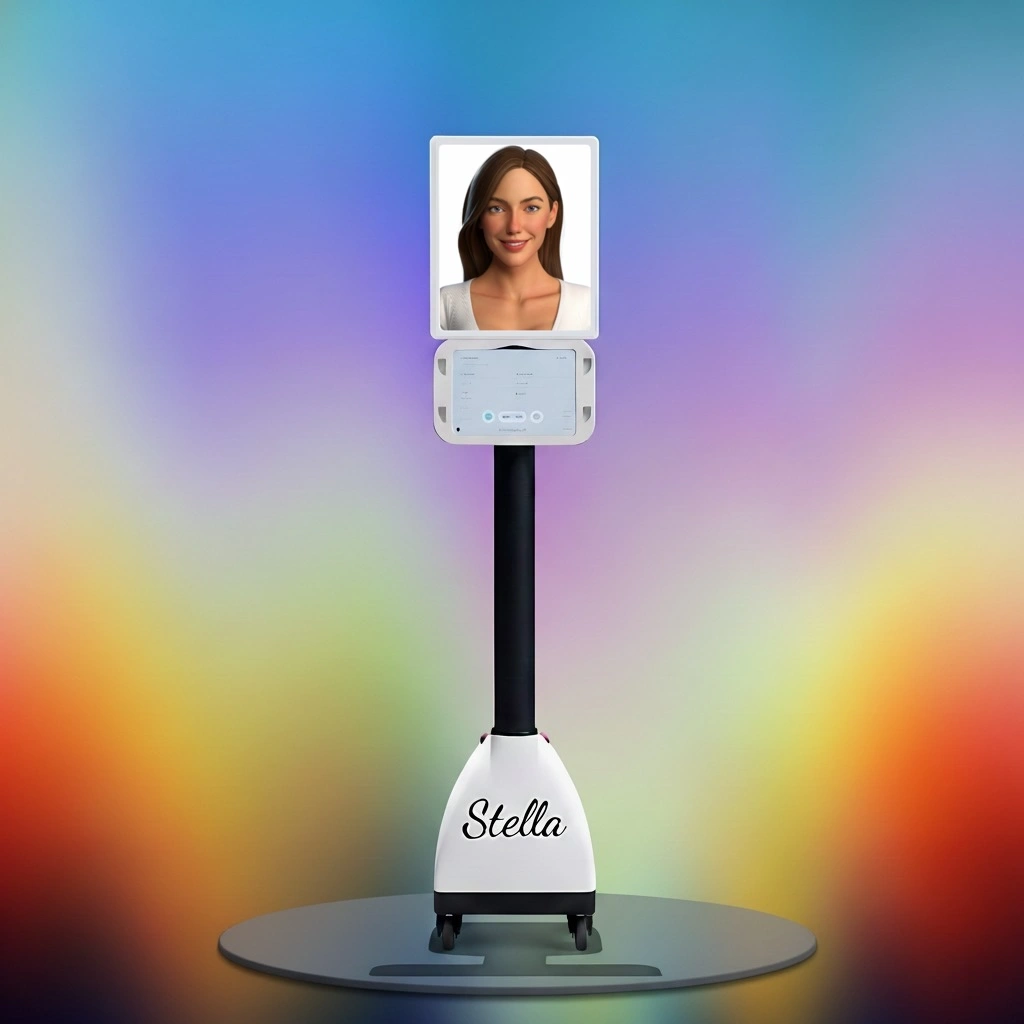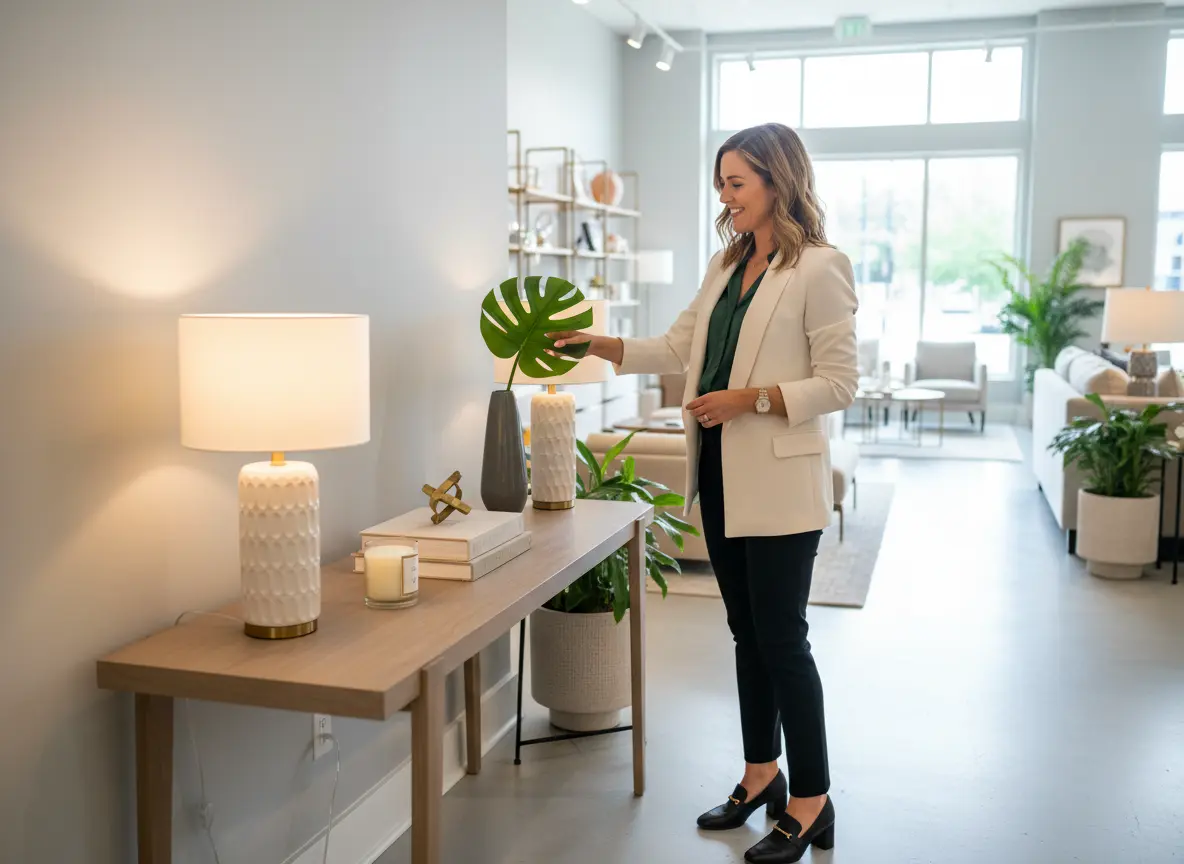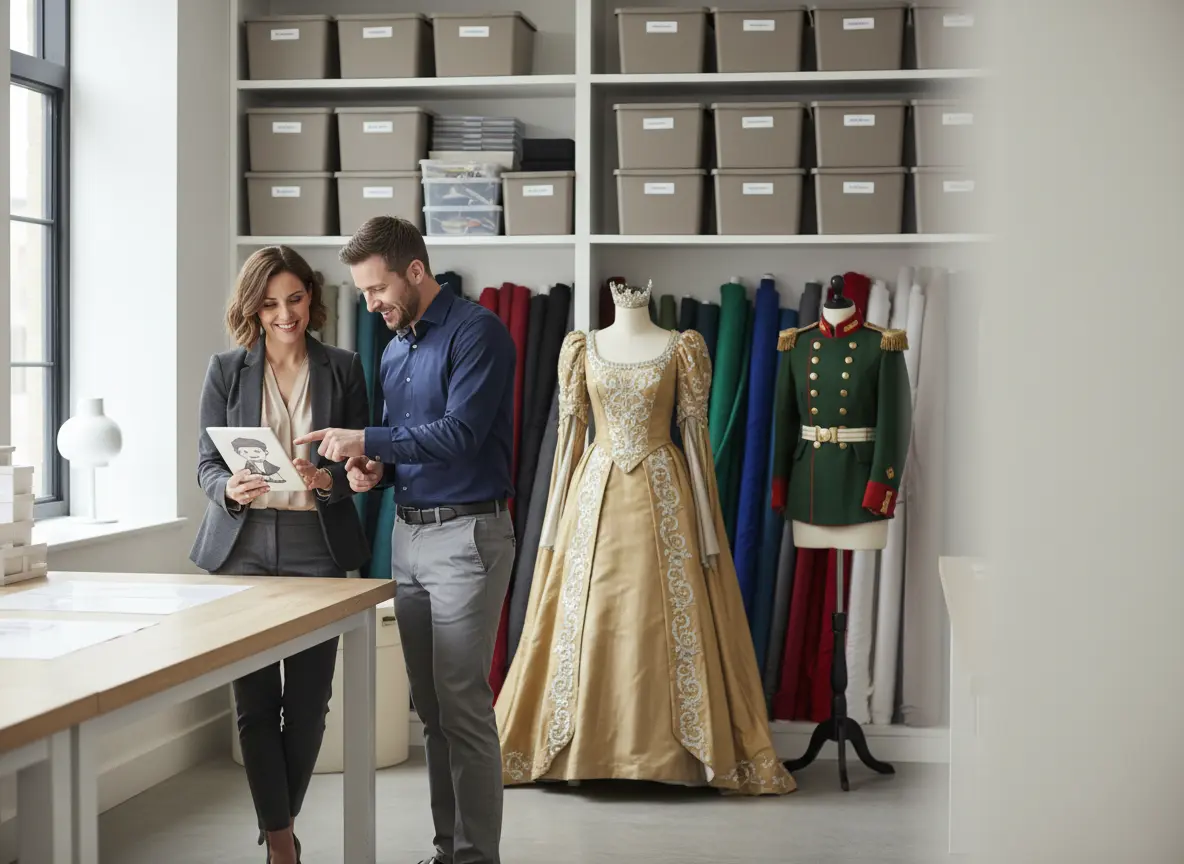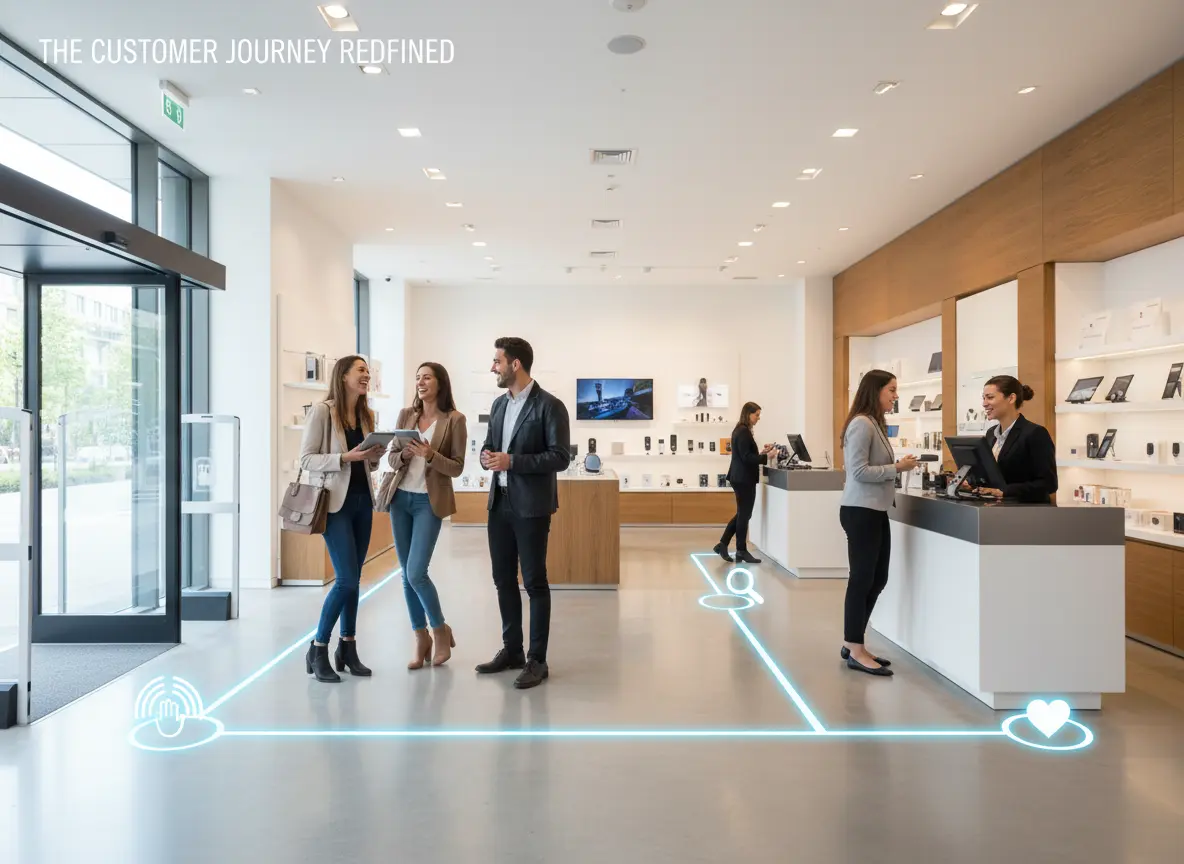Are You Listening? Or Just Hearing Noises?
Let’s be honest. You’ve had one of those days. You check your Google reviews and see a fresh one-star bomb from “Kevin P.” with the helpful, eloquent comment: “Meh.” You stare at a pallet of novelty socks that seemed like a brilliant idea three months ago but now serve only as a dust sanctuary. You think you know what your customers want, but your sales data and the deafening silence in aisle three tell a different story.
Guessing what’s on your customers’ minds is a high-stakes game. Gut feelings are fantastic for deciding whether to have pizza or tacos for lunch, but they’re a notoriously terrible financial advisor for your business. The truth is, your customers are constantly telling you how to build a better, more profitable store. The problem? Most of that invaluable feedback is dissolving into thin air the moment they walk out the door.
This isn’t just about damage control or placating the occasional grumpy shopper. This is about mining for gold. Customer feedback is the most powerful, cost-effective market research you can get. It’s time to stop guessing and start leveraging this treasure trove of insights. Here’s how to collect it, make sense of it, and use it to build a store that customers actively want to spend money in.
The "Art" of Asking: How to Collect Feedback Without Annoying Everyone
Nobody likes being interrogated after buying a pack of gum. The key to collecting good feedback is to make it as frictionless as possible. Your goal is to gather intelligence, not to give your customers homework. Here are a few ways to do it without driving them away.
Beyond the Suggestion Box (That's Really Just a Dust Collector)
That wooden box bolted to the wall with a few sad, faded slips of paper in it isn’t fooling anyone. It’s a relic. In the digital age, we can do better. Think in terms of low-effort, high-impact methods:
- The Receipt QR Code: A simple QR code on every receipt that links to a one- or two-question survey. "How was your visit today?" with a 1-5 star rating is enough to get started. You can offer a small incentive, like 10% off their next visit, to boost response rates. According to research from BrightLocal, 86% of consumers read reviews for local businesses, so getting more feedback is crucial.
- Post-Purchase Emails (Keep It Brief!): If you have a customer email list, a simple follow-up email can work wonders. But for the love of all that is profitable, don’t send them a 30-question epic. A simple Net Promoter Score (NPS) question—"How likely are you to recommend us to a friend?"—is quick, easy, and gives you a powerful benchmark.
- Point-of-Sale Prompts: Many modern POS systems can be configured to ask a quick question on the card reader screen after a transaction. A simple thumbs-up/thumbs-down can provide a constant stream of sentiment data.
Training Your Team to Be Feedback Spies (In a Good Way)
Your frontline employees are your most valuable listening posts. They hear the unfiltered, casual comments that customers would never bother to write down. The trick is to systematize the collection of this intel without making your staff feel like they need a trench coat and a fake mustache.
Train your team to listen for "feedback phrases" like, "I wish you carried..." or "It was really hard to find..." or "Do you ever have sales on...?" These aren't complaints; they're buying signals and operational suggestions in disguise. Create a dead-simple way for them to log this information—a dedicated Slack channel, a shared Google Doc, or even a clipboard behind the counter. The easier it is, the more likely they’ll do it. Empower them to ask open-ended questions like, "Find everything you were looking for today?" which invites a much more useful answer than the conversation-stopping, "Can I help you?"
Leveraging Your Digital Storefront
Whether you like it or not, your online presence is a 24/7 feedback forum. Google Maps, Yelp, Facebook—these are the new town squares where customers share their experiences. Don't just passively receive these reviews; actively manage them. Encourage happy customers to leave a review with a small sign at the checkout or a link in your email newsletter. More importantly, respond to every review. A thoughtful response to a negative review can sometimes win you more respect than a dozen five-star ratings. It shows potential customers that you’re listening and you care. Use social media polls and questions in your Instagram Stories to ask your followers directly what they want to see. It’s free, engaging, and provides instant market research.
Let's Get Digital: Tech-Powered Feedback
Beyond manual methods, technology can offer a powerful, automated way to understand the customer experience as it's happening. This is where you can get an unfair advantage by capturing insights that your competitors are missing entirely.
Your New Frontline Intelligence Officer
Imagine having a team member at the front of your store who is always friendly, never takes a break, and meticulously logs what every single customer is interested in. That's the power of an in-store robotic assistant. For example, Stella doesn't just greet shoppers and announce promotions; she’s a data-gathering powerhouse. Every time a customer asks her about the "2-for-1" deal on t-shirts or where to find the new shipment of coffee mugs, that interaction is a data point. This is feedback based on observed behavior, which is often far more reliable than what people say on a survey.
If Stella mentions the weekly special to 200 people and her analytics dashboard shows that 75 of them immediately asked for more details, you’ve just received real-time validation that your promotion is a hit. If she mentions a slow-moving product and no one bats an eye, you know the offer isn't landing. It's an A/B test for your physical store, running 24/7.
Analyzing the Unspoken Word
The questions customers ask are a direct window into their needs and your store's friction points. Is Stella constantly being asked where the restrooms are? Your signage probably needs an upgrade. Are dozens of shoppers asking if you carry a specific brand you don't stock? That’s not a complaint; that’s a demand signal for your next inventory order. This continuous stream of qualitative data helps you understand the *why* behind your sales numbers, allowing you to proactively fix problems and jump on opportunities before they even show up in a formal review.
You Have the Data. Now What? (Hint: Don't Just Stare at It)
Collecting feedback is pointless if it just sits in a spreadsheet, judging you. The final, most important step is turning those comments, stars, and data points into meaningful action. Data is a tool, not a decoration.
Sorting the Gold from the Grumbles
Not all feedback is created equal. One customer’s bizarre request for a product you’d never sell is an outlier. Twenty customers asking for the same thing is a trend. Your first job is to categorize the feedback you receive. Create simple buckets:
- Product: Requests, quality issues, pricing.
- Store Experience: Layout, cleanliness, music, signage.
- Staff: Positive shout-outs, service issues.
- Policy: Return policy, store hours, promotions.
By tallying comments in these categories, you’ll quickly see where the real problems and opportunities lie. This process transforms a chaotic mess of opinions into a prioritized action plan. Focus on the recurring themes, not the one-off rants.
The "Close the Loop" Maneuver
This is the secret sauce that turns casual customers into loyal fans. When you make a change based on feedback, tell everyone. If you start stocking that gluten-free pasta everyone was asking for, put up a sign that says, “You asked, we listened! Our new gluten-free section is here.” Post about it on social media. This accomplishes two critical things: it validates the customers who gave the feedback, making them feel heard and valued, and it signals to all your other customers that you are a responsive business that genuinely cares about their experience. It’s one of the most powerful marketing moves you can make.
Turning Insights into Inventory and Operations
The ultimate goal is to let customer feedback drive your business decisions. Use product requests to inform your purchasing and reduce the risk of ordering duds. Use comments about store layout to rethink your merchandising and improve the customer flow. A Bain & Company study found that companies that excel at customer experience grow revenues 4-8% above their market. That growth comes from making tangible improvements based on what you learn.
Are people consistently praising a particular employee? Create a "team member of the month" award to boost morale and reinforce great service. Are shoppers complaining about long weekend checkout lines? It might be time to invest in another POS terminal or re-evaluate your staffing schedule. Every piece of feedback is a clue to running a smarter, leaner, and more customer-centric operation.
A Quick Reminder About Stella
While you're putting up signs and training staff, remember that a digital assistant can be your secret weapon. She’s your always-on, always-professional greeter who not only delights customers and drives sales but also doubles as your in-store data analyst. Stella delivers the real-time, behavioral insights you need to make smarter decisions, all for a simple monthly subscription.
Conclusion: Stop Guessing, Start Growing
In the crowded retail landscape, the stores that win are the ones that listen best. Customer feedback isn't a chore to be managed; it's a strategic asset to be cultivated. It’s the difference between a store that merely exists and a store that thrives, building a loyal community of customers who feel like they’re part of your success—because they are.
Your challenge for this week is simple: pick one new feedback method from this post and implement it. Add a QR code to your receipts. Hold a 10-minute huddle with your team about listening for customer comments. Respond to your last three Google reviews. Just start somewhere.
Now go out there and turn those customer comments into customer commitment. Your bottom line will thank you for it.





















